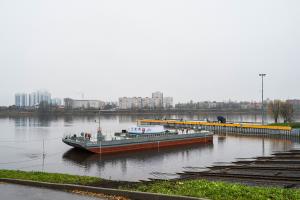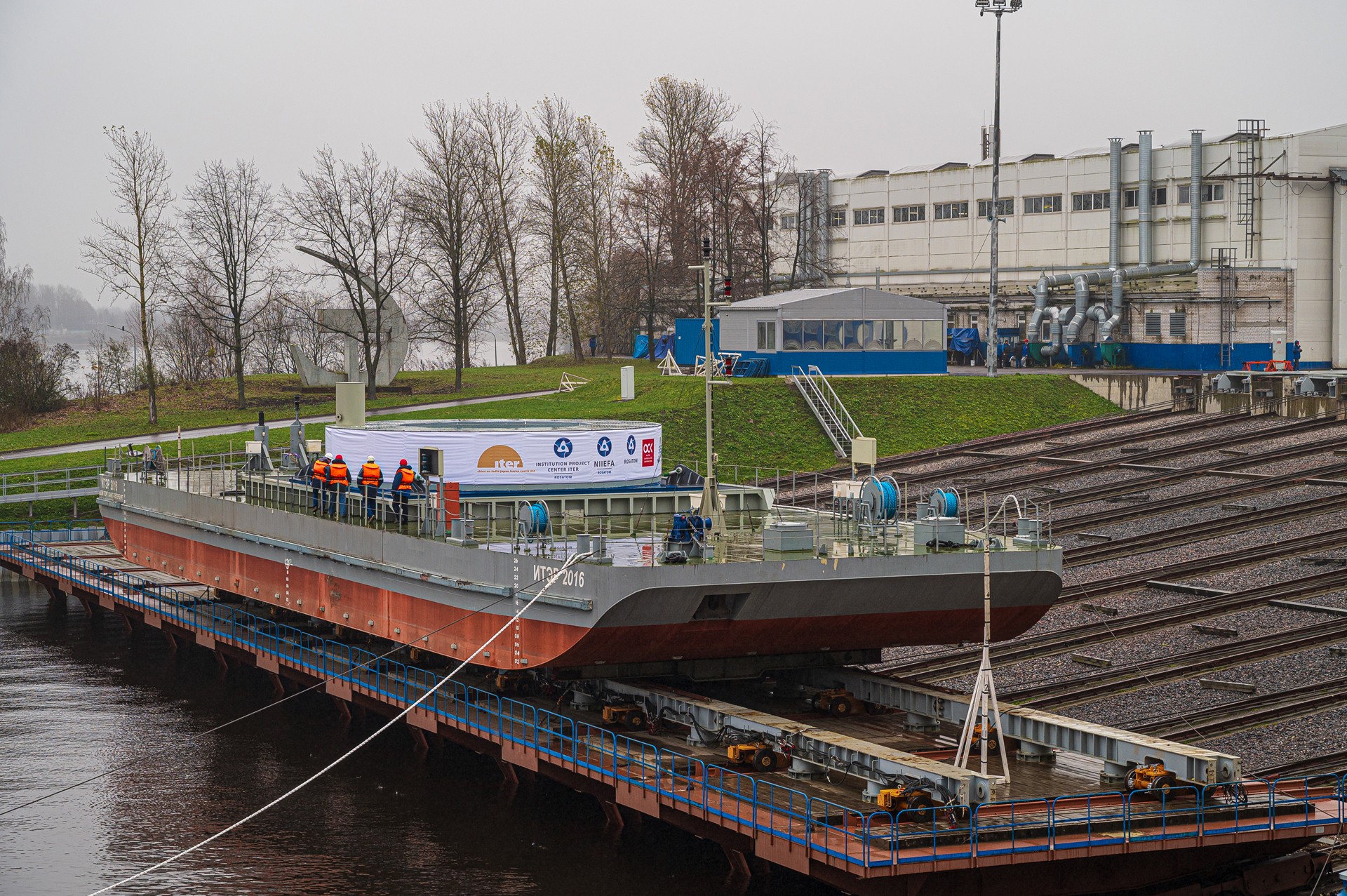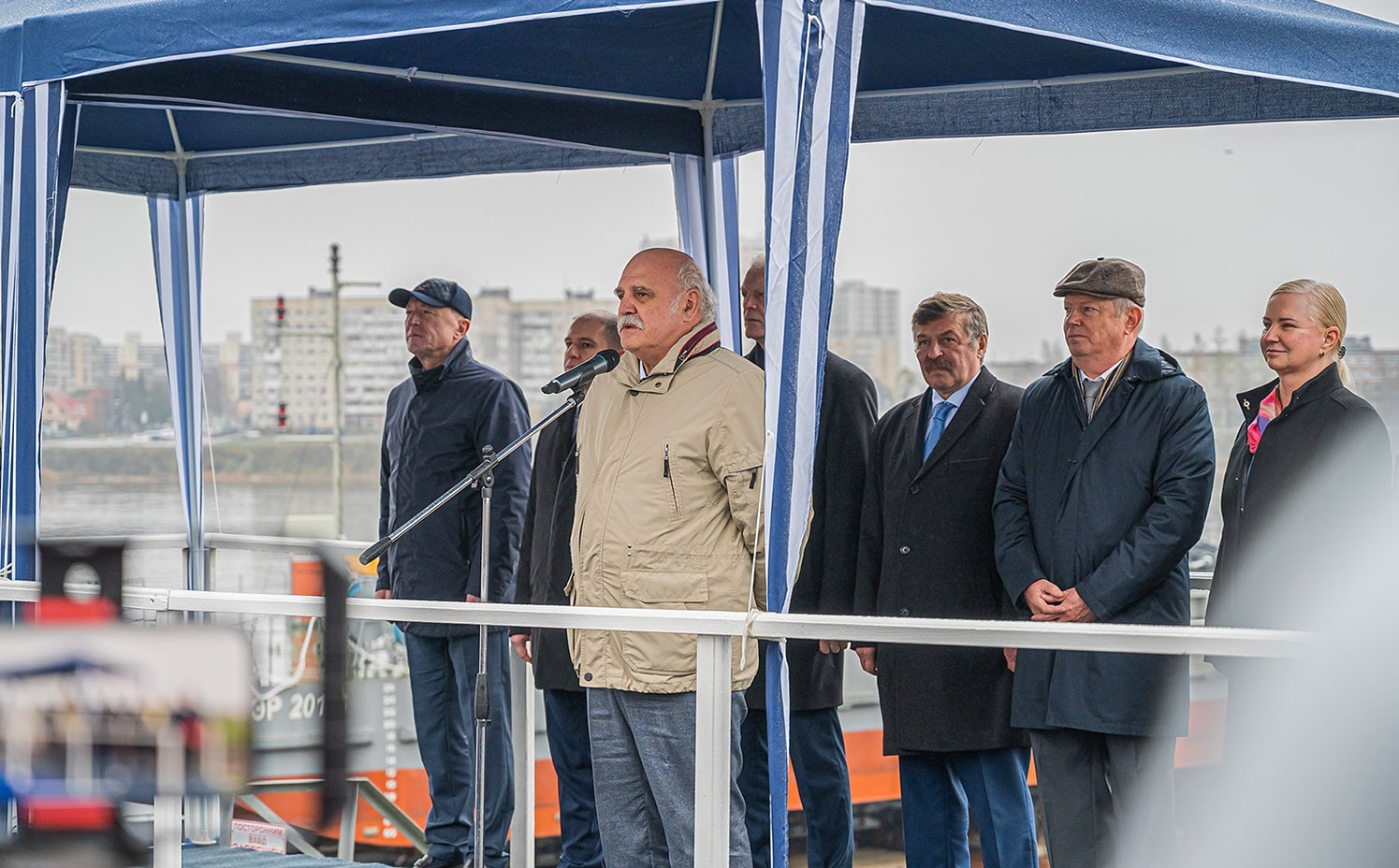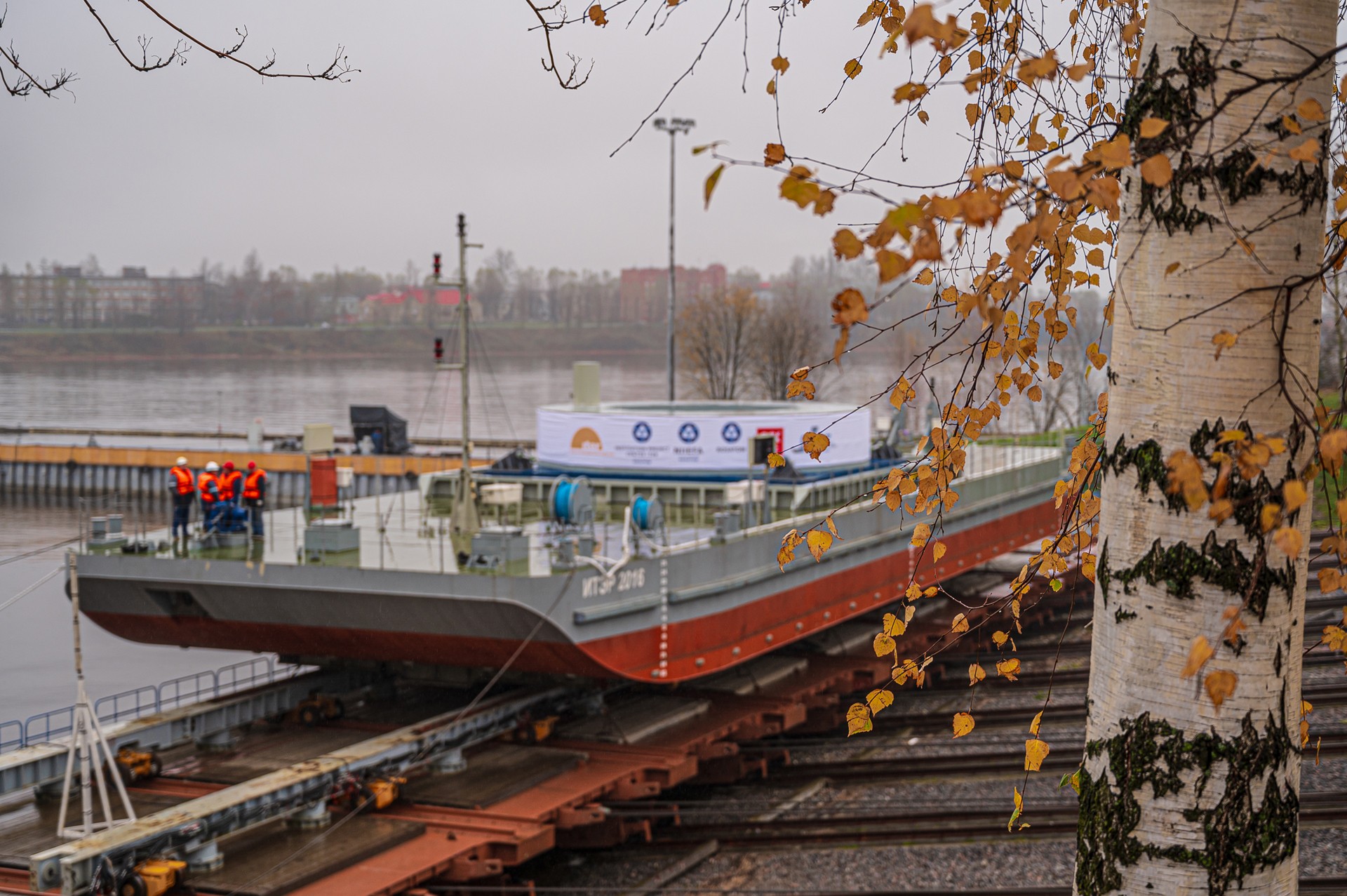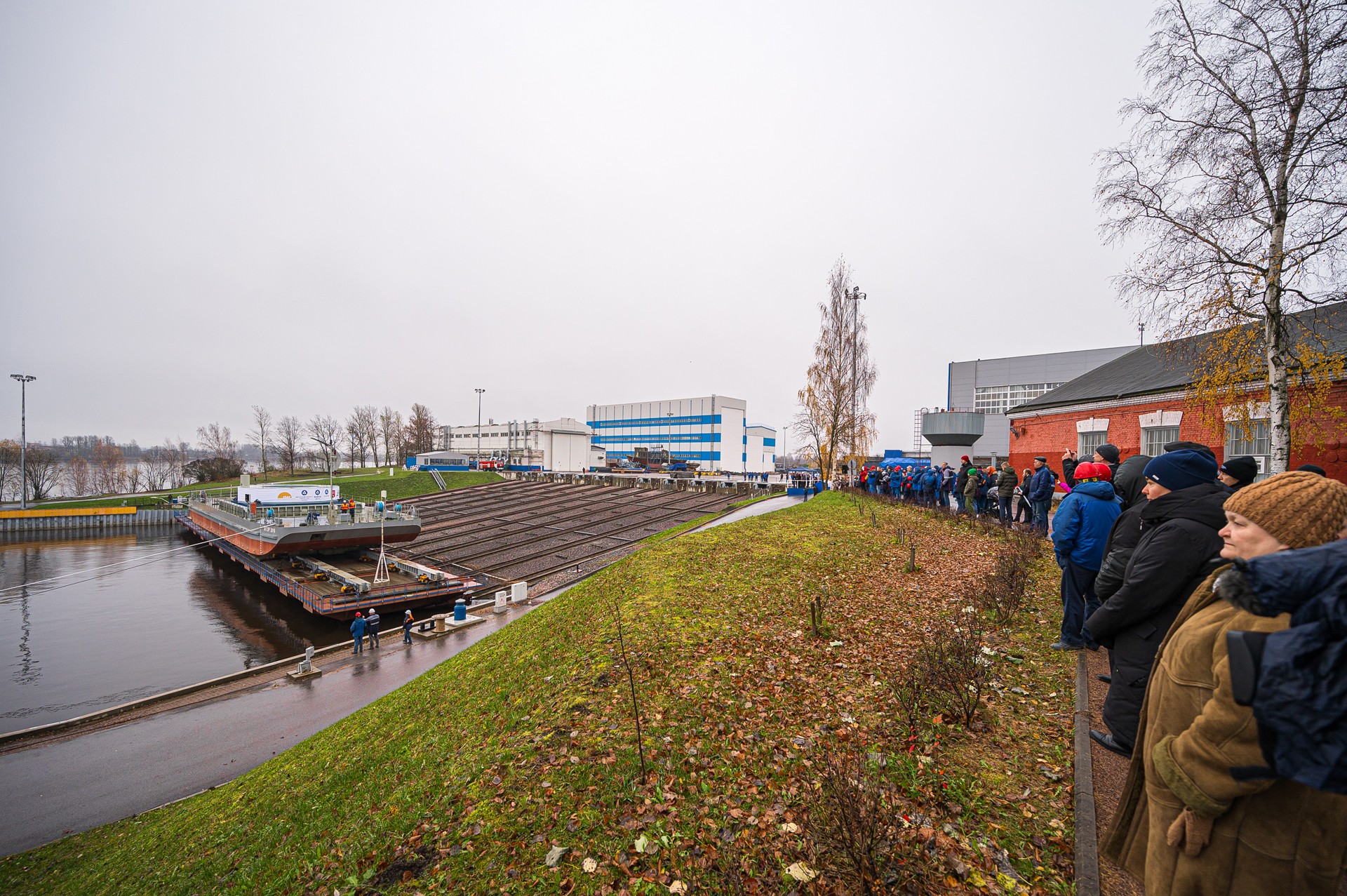The top ring is on its way
After a ceremonial launch at the Sredne Nevsky shipyard in Saint Petersburg, ITER's smallest ring-shaped magnet—poloidal field coil #1 (PF1)—has been loaded on a transport vessel for shipment to ITER.
On 1 November, a small crowd had gathered to witness the historic departure of the component from the factory, including representatives from the Russian State Duma, Rosatom, the ITER Organization, and city officials.
"This event is of enormous importance both for domestic enterprises that participated in the manufacture of this most complex component of the future thermonuclear reactor, and for the entire project as a whole," said Anatoly Krasilnikov, director of the Russian Domestic Agency for ITER. "This is an outstanding result of many years of fruitful, well-coordinated work of leading Russian institutes and industrial enterprises, a spectacular demonstration of our scientific and technological potential."
Six ring-shaped poloidal field coils will be positioned horizontally outside of the ITER vacuum vessel and toroidal field magnet system to shape the plasma and contribute to its stability by "pinching" it away from the walls. With a combined weight of approximately 1,800 tonnes and diameters ranging from 9 metres to 24 metres, the poloidal field coil system is one of the three major magnetic systems of the ITER device.
The coils are built from layers of niobium-titanium superconductor wound into double layers called pancakes. The work to build eight double pancakes for PF1 was carried out in Russia between 2016 and 2019. The coil impregnation phase followed, and in March 2022, the magnet passed all factory acceptance tests. The most important technologies and equipment for the manufacture of the coil were developed at JSC NIIEFA (Rosatom State Corporation), while manufacturing was carried out at the Sredne Nevsky Shipyard (JSC SNSZ) in Saint Petersburg.
PF1 is one of the 25 systems included in the sphere of responsibility of the Russian Federation within the framework of the ITER Project.

